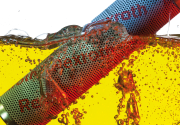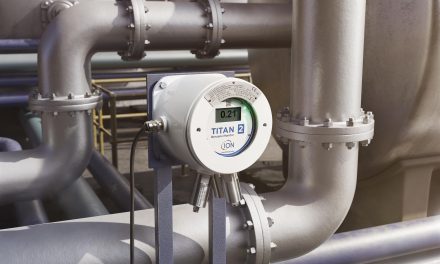
‘Oil contamination – The origins, treatment and analysis of contaminated oil in hydraulic systems’, by Chris Gray (Bosch Rexroth) found that effective analysis is often overlooked due to insufficient time and resources.
He has called on engineers to implement regular oil analysis as part of a preventive maintenance programme. Figures suggest that only 20% of unplanned downtime can be identified through monitoring techniques. However, 80% of all hydraulic failures on machinery can be traced back to contaminated oil, which component monitoring will not detect.
There are three types of contamination which can be identified by oil analysis.
- Dirt and dust particles can cause jamming, influence control behaviour and prematurely wear components
- Liquid contamination from water and fluid mixtures causes corrosion and wear, along with impairment of viscosity and can even cause a chemical reaction with the fluid which can impact lubricating properties
- Gaseous contamination, such as air, can cause foaming in the oil sequences; inaccurate response of valves; energy loss; damage to pumps; or chemical reactions with the fluid and oxidation
The most important filter characteristics are filtration grade, dirt absorption capacity and differential pressure. It is vital that the proper filter material and filtration grade is be used to prevent oil contamination. Before selecting an oil filter it is important to have an understanding of three key oil filtration criteria: Oil flow, oil viscosity and system pressure.
Types of inspection
Laboratory oil examination involves offline inspection of an oil sample to determine the microscopic particle count in accordance with ISO 4407 and a gravimetric test in accordance with ISO 4405. Mobile particle counting, requires a mobile particle sensor which uses the light extinction principle and a laser sensor to measure and record oil cleanliness levels. Oil analysis allows for the identification of key machine trends but can provide information that can be difficult to interpret. It is important to know which piece of equipment the oil was sampled from as this can help link the reported contamination with certain internal components.
Three key areas to focus on:
- The ISO level which will determine whether the oil sample is meeting the required industry standard
- W (water level) – a report highlighting a water level of over 300 parts per million (ppm) which is a concern and would require a water extraction method to be implemented
- SI (silica) – this identifies the hard airborne contamination levels which starts the chain reaction of wear
Typically, an oil analysis report will come with a written summary section that attempts to put results and recommendations into layman’s terms and it is vially important that these comments are taken on board and that actions are taken.
The original report can be downloaded here.

